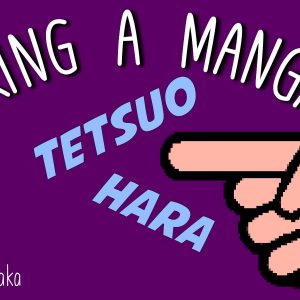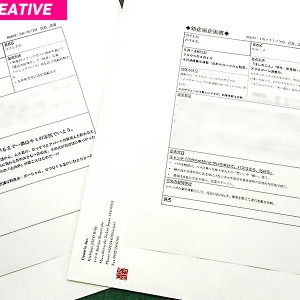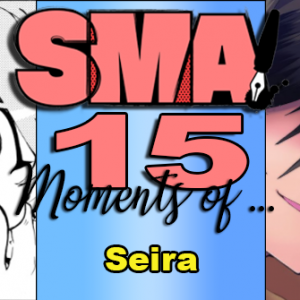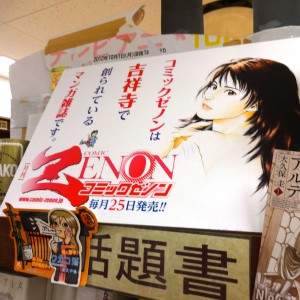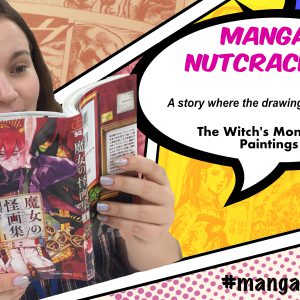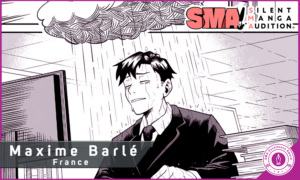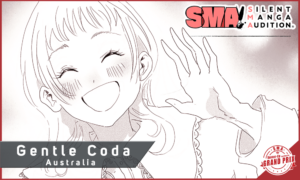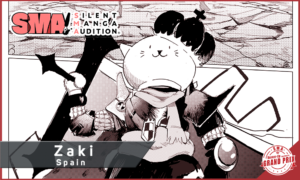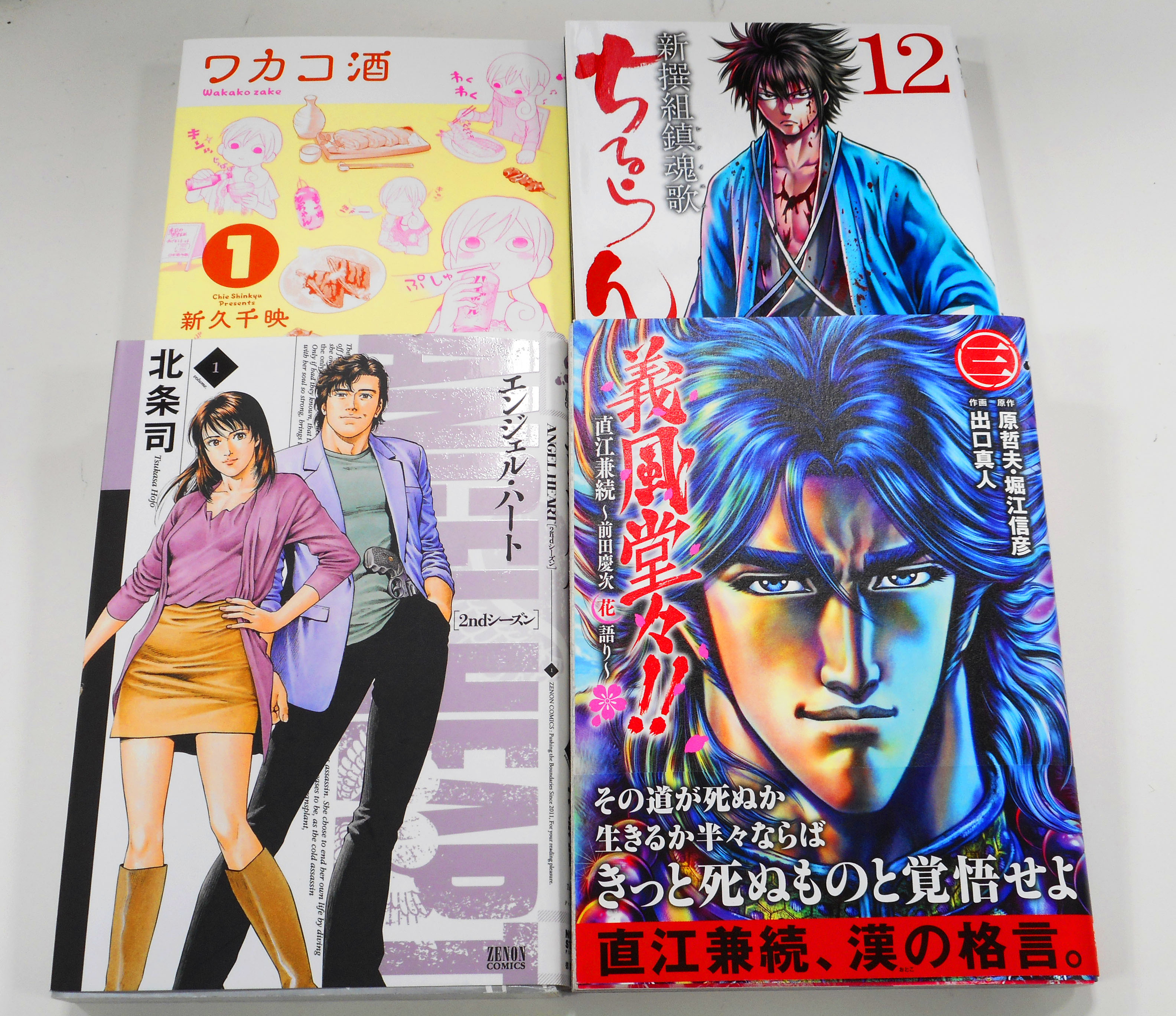
1. The Comics Meeting
At ZENON, the process of creating a new manga book always begins with a meeting. This meeting is held approximately 3 months before the expected release date of the book, and is attended by the editor in charge of the manga, a sales team representative and a member of the Publication Planning Department. First, the editor presents his ideas for the book, along with a written proposal and a detailed draft (which indicates what will be printed on each page). Afterwards, they discuss strategies to make it even more successful. Based on their ideas, the future book will take shape.These discussions can get pretty heated!
“This catch phrase is too weak! We need stronger words and design to give this work impact!”
“That idea doesn’t suit this manga!”
“Data from similar works indicates this, so we should choose a design along those lines.”
“How about approaching our target audience in this way?”
It’s not only a question of design principles… you also have to take in account the latest trends and the feelings of the artist. Sharp comments fly across the room!

2. Circulate the Confirmation Sheet
After the meeting, a confirmation sheet is usually circulated to inform the top brass of the decisions made during a meeting, and to obtain their permission to proceed. So the plan for the book is attached, and shown to the managers, directors and the company president to get their approval.
To be specific, the confirmation sheet contains: the slogan, details about the author, the target audience, the cost price and selling price, the proposed number of volumes to be printed, and any other details.
The tricky part is the cost price and selling price! Naturally, comics cost money to make. Printing expenses, royalties to the artist, distribution expenses, storage expenses, sales team expenses… to name just a few examples of where the money goes! As such, we need to do careful calculations to come up with a selling price to recoup these expenses and turn a profit.
If one way is to calculate the production costs and add mark-up, another would be to first choose a selling price, and then work backwards to calculate how much we can afford to spend on production. In either case, we’re trying to work out how we can “break-even” (those familiar with economics will be used to hearing this phrase!) When it comes to things like page quality and processing, we usually bow to the wishes of the editors and artists. However, there are other areas where it’s possible to save some money. Part of Mr. Maeda’s job is to negotiate with the printers and designers to get a fair price.
In the publishing world, the sad reality is that if a series isn’t expected to turn a profit, it may never be published in book format. So there are publisher’s out there that pick and choose which series they publish as books. However, here at Comic ZENON, if we didn’t have confidence in a series, we wouldn’t have published it in our magazine to begin with. Each of the works that has made it into our magazine has passed our strict criteria, and survived numerous editorial meetings. As such, we usually release book formats of all our manga!
Mayu’s point!!: Royalties
Royalties is the money paid to the artist as a fee to use their work. A manga artist’s two main sources of income are royalties (paid when their work is published) and genkouryou (money received for drawing manga for the magazine). Other income sources might include their contract fee, fees for the rights to use their characters etc.
In Japan, royalties are paid either at the time of printing, or when the books are actually sold. However, in either case, the amount paid to the artist is: selling price × 10% × number of books. At ZENON, we pay royalties when the manga is printed. So if the manga sells out and new stock is printed, the artist will receive more royalties. From the artist’s point of view, these royalties are like a bonus!
It depends on the circumstances, but usually new stock is ordered when 80-90% of the current stock is sold out. Most of the time, if the stock sold well in the first 2 weeks after the release, it is likely to get reprinted. If there’s a big initial response, the sales team will see that the book has potential and they’ll order new stock printed. If you want to support a manga artist, please buy their book as soon as possible after it’s released!
3. Publishing the Book
Once we get permission, we can finally begin work on the book itself!
First, we gather all the data for the manga in question. That means taking the data from all the comics that were published in the magazine, and creating a draft for the book. This is then sent to the printers, and nyu-ko process (as described in Manga Insider Mayu #7) begins!
The submitted draft is printed on a proof sheet and returned. It’s then checked by the editor, the manga artist, and Mr. Maeda, who’s in charge of this process. Additions or corrections are written in, and then it’s once again sent to the printers.

While this check is going on, we’re also busy designing the jacket, the frontispiece and the wraparound. This is actually the part that requires the most creativity!
They say that 80% of the time, people judge things based on their appearance. So if we don’t make eye-catching illustrations and clever slogans, then the buyers won’t even pick the book up! A temporary design by the editor is usually approved during the meeting, but this design is polished and improved right up until the book goes on sale.
After the editor sends the proof back, it will be corrected, and another proof sheet will be sent. This time, it’s checked by the editor in charge, and final confirmation is given by Mr. Maeda’s Publication Planning Department. Once they’re sure that there are no problems with any of the text, pictures or information in the book, they OK the proof. Then it’s just a matter of waiting for the printing. This process usually takes about two weeks, starting a month before the planned release date. At ZENON, new books are released on the 20th of each month and the magazine is released on the 25th, so the editors don’t get much of a break in-between checking the books and the magazine!Mayu’s point!!: The Book’s Appearance
Although you can sum everything up as “the book’s design”, there are actually loads of things that you need to decide on. Let me introduce a few of them!
– The jacket: This covers the whole manga! (In fact, it’s called the “cover” in Japanese) It’s no exaggeration to say that this is the face of the manga! It’s the number one thing that attracts a potential buyer, so it’s very carefully designed.
Here are some manga books published at Comic ZENON! Each has a different design and texture. Let’s take a closer look…
This is the jacket of ‘Wakako-Zake’. A special coating called “Matte PP coating” is used for it!
This is the jacket for ‘Chiruran’. This coating is called ‘Gloss PP’
The jacket of ‘Gifu Doudou’. It is covered with “Varnish coating”, which makes texture feel a bit rough!
Here’s the jacket for ‘Angel Heart 2nd Season’. This one’s a bit special- most of it is “Matte PP coating”, but the title logo is done with “UV varnish coating”!
– The Frontispiece This is the illustration on the very first page, that you see when you first open the book.
If the artist is famous for their beautiful pictures, then it’s very important to include this! If the story is more important, then it’s not absolutely necessary. You get books both with and without frontispieces, depending on the direction that the editor and the artist want to go in.
‘Nobosan to Kanojo’, drawn by Morico Ross sensei, has a frontispiece!
‘Watashi no Kare wa Shigoto ga Dekinai (My darling is not excellent in work)’ has no frontispiece!
– The Wraparound The wraparound is a thin paper band that goes around the cover. It should contain a single summary of the books contents, and give someone a reason to buy the book.
You need to write something on the wraparound that really strikes the heart of the potential buyer, that will make them acknowledge the existence of the manga!
‘Wakako Zake’ and ‘Hokuto no Ken Ichigo Aji (Fist of the North Star Strawberry Flavor)’ are receiving anime adaptions! There’s no way we’re gonna miss this chance, so we made wraparounds that advertise this! (TVアニメ化=TV Animation Adaptation)
– The Cover It goes with out saying, but the cover page is very important! There are lots of simple covers out there, but there are also playful manga that have humorous 4 panel comics on the front!
‘Nobo-san to Kanojo’ again. A special manga is hidden under the book jacket!
Mayu’s point!!: What makes a cover and jacket easy to spot?
According to Mr. Maeda, a “good” design, is one where the artist’s illustrations are put to good use, and a potential buyer can see any necessary information with just a glance. Here is a Comic ZENON example:
This cover has the hero of Chiruran, Toshizo Hijikata, and in vertical letters: “Shinsengumi Vice-Captain(新撰組副長)”, “Izumi no Kami Kanesada(和泉守兼定)” and “Toshizo Hijikata(土方歳三)”. And finally, in orange letters across his stomach “Issen(一閃)” (this means “In a flash!”) The title “Comic ZENON(コミックゼノン)” is also at the top of the magazine.
The title is placed near that top so that it isn’t hidden when it’s lined up next to other books in a bookstore. In convenience stores, magazines are usually displayed with the cover facing outwards, but if the title isn’t near the top, it might be covered up by another magazine on the rack.
The character is placed in the center, so that readers who know Chiruran will be able to easily identify that it’s Comic ZENON. Toshizo Hijikata was the name of a famous Shinsengumi samurai, so history fans will also be drawn in!
“Izumi no Kami Kanesada” is the name of Toshizo’s sword, and it’s written in big eye-catching letters to take advantage of a current trend in Japan: interest in swords! In particular, there’s a game called Touken Ranbu (“Tourabu” for short)’, that is very popular, and Izumi no Kami Kanesada is one of the swords found in-game. Issen (in a flash) is also a word associated with swordsmanship. By using these keywords, we can potentially expand our reader base by including sword fans.We also try to catch the reader’s eye with catchphrases like “Anime Adaption Announced!” and other special news, or freebies.
Next, let’s take a look at the ‘Chiruran book’. This is also extremely well designed.
This series has lots of characters that wear the eye-catching Shinsengumi uniform (the dandara jacket) and they’re often used on the cover. The wraparound has the same “dandara” pattern, and introduces the characters.
The Shinsengumi that appear in Chiruran were an actual organization in 19th century Japan. They were a kind of police force in the Edo period.
Shinsengumi fans will notice this design immediately. They’ll also find the well-known names of the members such as Toshizo Hijikata, and hopefully become interested in buying the book.
So when designing a book, it’s important to appeal to difference audiences, with eye-catching pictures and slogans.
Working on the books outer appearance isn’t very exciting, but if it’s not done properly, then the readers might not even realize the book exists, and never get the chance to enjoy it! It’s an under-appreciated job, but very important nonetheless.
The proofreading is also very important. If even a single letter is incorrect, the meaning of a sentence can change completely. And a mistake in the title or the artist’s name is considered a fatal error in the publishing world! Magazines are usually thrown away after a few months, but people keep books for years, so a mistake will come back to haunt us! Mr. Maeda works tirelessly to prevent mistakes, keep the editors and printers on schedule, and to support the manga that goes out into the world.
Finally, here is a message to everyone from Mr. Maeda:
Dear Readers,
We do our best everyday, so that you can enjoy the manga without any distractions. We put our hearts into making each page, from the front cover to the advertisements at the back, and we hope that you enjoy every inch of the book!
If you find any typos or errors, please (quietly!) contact us via telephone or mail. That would be a big help! We do our best to catch all the mistakes, but at the end of the day, we’re only human! So if you find anything, don’t think too harshly of us!
People don’t think much about it when they buy a book, but there’s a lot of work that goes on behind the scenes to prepare it. It’s thanks to many people who take their work very seriously that we have manga.
Maybe next time you buy some manga, you’ll look at it a little differently!
On the next episode of Manga Insider Mayu, I’ll be answering some of the questions that you’ve send me!
Is there anything that you want to ask the editors, or anything that you want to ask about this article?
I’m looking forward to any opinions or messages of encouragement! Please fill up the comments box!
[catlist name=”MANGA INSIDER MAYU” thumbnail=”yes” thumbnail_size=160 content=”no” date=”yes” dateformat=”M j, Y G:i” template=page_list]
















